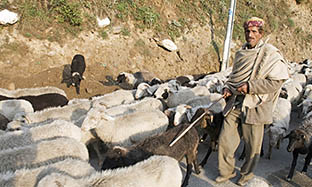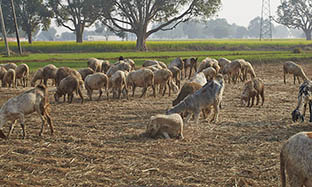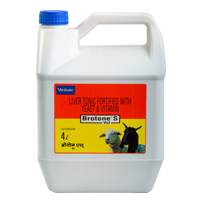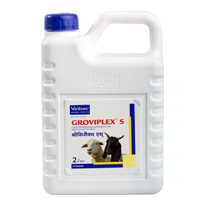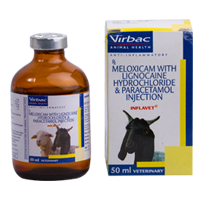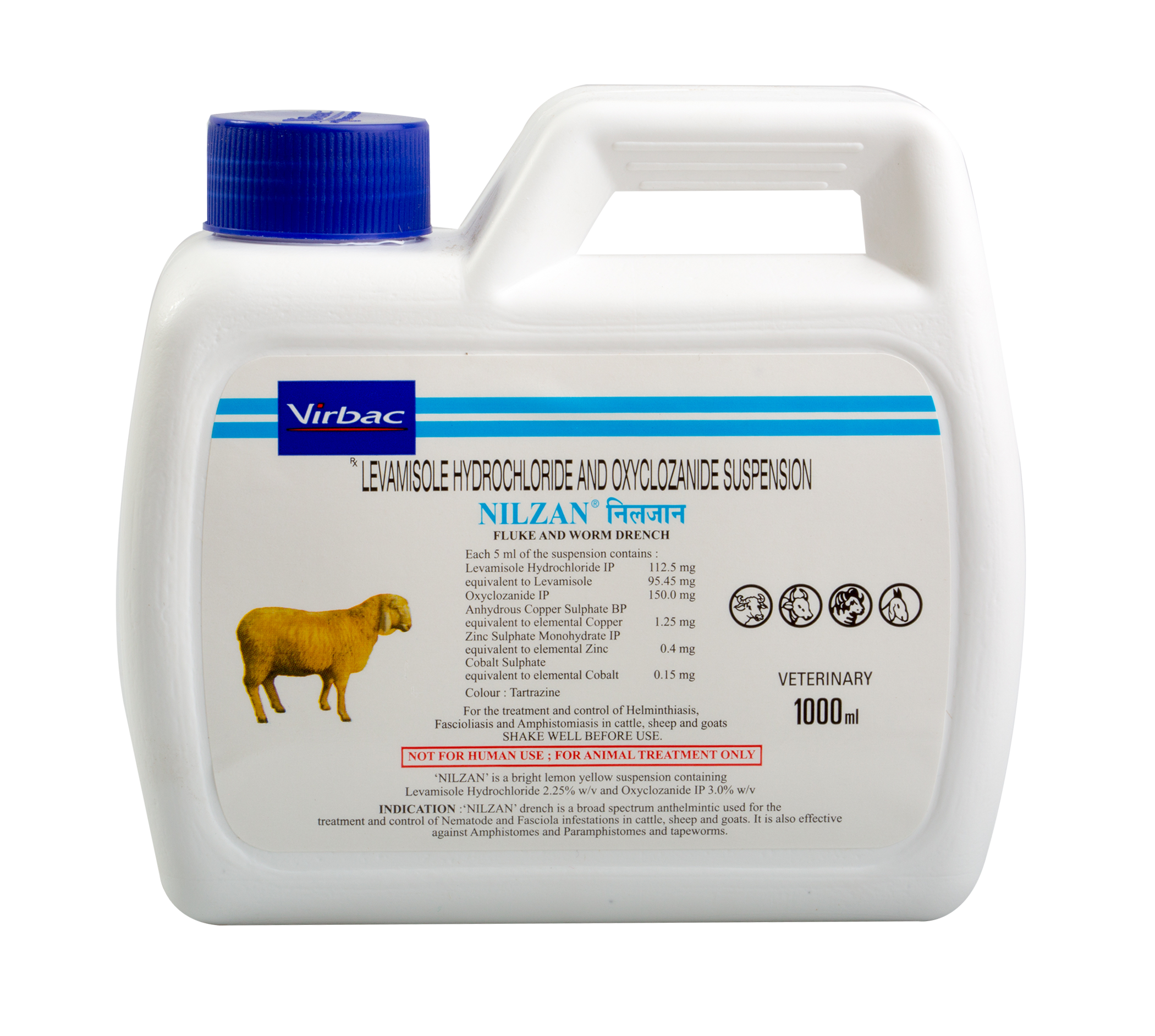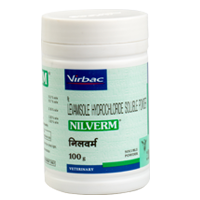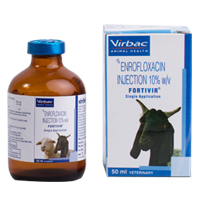 (1).jpg)
Common Causes and Effective Treatment for Sheep and Goat Diarrhoea
When it comes to raising sheep and goats, diarrhoea can be a distressing and common issue. Diarrhoea in these animals can manifest as soft, watery, and foul-smelling droppings. There are various underlying conditions responsible for this gastrointestinal distress, including peste des petits ruminants (PPR), colibacillosis, salmonellosis, Johne's disease, coccidiosis, worm infestations (like liver fluke, rumen fluke, tapeworm, etc.), exposure to poisonous plants, and nutritional lamb scours. Let us understand the common causes and effective treatments for sheep and goat diarrhoea, and the best practices for managing these conditions.
Peste Des Petits Ruminants (PPR): Caused By Morbillivirus
Peste des petits ruminants (PPR) is an acute or subacute viral disease of goats and sheep characterized by fever, necrotic stomatitis, gastroenteritis, pneumonia, and sometimes death. Goats and sheep appear to be equally susceptible to the virus; however, goats exhibit more severe clinical signs. At a local level, PPR epidemics may eliminate the entire goat or sheep population of an affected village.
PPR is transmitted by close contact, and confinement favours outbreaks. The secretions and excretions of sick animals are the sources of infection. Transmission can occur during the incubation period. It is generally accepted that there is no carrier state. The common husbandry system whereby goats roam freely in urban areas contributes to the transmission and maintenance of the virus.
Diarrhoea may be profuse and accompanied by dehydration and emaciation; hypothermia and death follow, usually after 5–10 days. Bronchopneumonia, characterized by coughing, may develop in the late stages of the disease. Pregnant animals may abort.
There is no specific treatment for PPR; however, treatment for bacterial and parasitic complications may decrease mortality rates in affected flocks or herds. A live, attenuated PPR vaccine prepared in Vero cell culture affords protection from natural disease for >1 year. (P.P.R. Peste Des Petits Ruminanat vaccine needs to be given at the age of 3 months for kids, lambs, and above.
Colibacillosis: A Bacterial Infection
Colibacillosis is a bacterial infection that primarily affects lambs and kids under two weeks of age. Several factors make these young animals more vulnerable to colibacillosis. First and foremost, new-born lambs and kids require colostrum, their mother's first milk, to gain immunity against a variety of diseases, including colibacillosis. Failure to consume colostrum makes them more susceptible to infections. Additionally, dirty and wet floors, pre-existing illnesses, and stressful conditions like relocation or overcrowding can further increase the risk.
The bacteria responsible for colibacillosis are present in the droppings of infected sheep and goats. When young lambs and kids consume contaminated food or water, they become ill. The clinical signs in affected animals include depression, loss of appetite, and the development of a watery, whitish-yellow or greyish diarrhoea known as "white scours." In severe cases, dehydration can lead to fatalities.
Treatment for colibacillosis involves the administration of antibiotics. However, it is crucial to provide sick lambs and kids with adequate water and electrolytes to prevent death from dehydration.
Salmonellosis: An Infection of Older Sheep and Goats
Salmonellosis is caused by a bacterial germ and typically affects older lambs and sheep between the ages of 1 and 2 years. Stress-inducing factors such as transportation to feedlots or abattoirs and overcrowding can contribute to the development of this disease. Additionally, abrupt dietary changes, such as shifting to a high-concentrate, low-roughage feed when moved to a feedlot, can trigger salmonellosis. High levels of Salmonella germs in the environment, particularly at abattoirs or feedlots, can also play a role.
Clinical signs in affected sheep and goats include fever, loss of appetite, and the presence of watery green diarrhoea, sometimes tinged with blood. Without prompt intervention, affected animals can die within 7 days due to dehydration or septicaemia.
Treatment for salmonellosis involves providing clean drinking water and, in some cases, administering activated charcoal. If feasible, relocating the animals to grazing areas where poisonous plants are absent is advisable. To prevent this disease, regular farm inspections should be conducted to identify and remove poisonous plants. Ensuring that sheep and goats have ample food can also deter them from consuming toxic plants. Special attention is needed when introducing new animals to the farm, as they may not yet recognize and avoid poisonous plants. Additionally, extra vigilance is required during early spring, when some poisonous plants start to grow before green grass becomes available.
Worm Infestations (like liver fluke): Fasciola Hepatica
Fasciola hepatica is one of the most important flukes of domestic ruminants worldwide, causing liver fluke disease (fascioliasis). Acute and subacute liver fluke infestations are more common in sheep and goats and are often fatal. Anaemia, bottle jaw (submandibular oedema), decreased weight gain, and decreased milk production can occur. Faecal sedimentation is an easy and inexpensive diagnostic tool.
In sheep, acute fascioliasis occurs seasonally and is manifest by a distended, painful abdomen; anaemia; and sudden death, which occurs 2–6 weeks after infection.
Chronic fascioliasis can occur in any season, but it manifests primarily in late fall and winter. Clinical signs include anaemia, thriftiness, submandibular oedema, profuse diarrhoea and reduced milk production. A heavy chronic infection is fatal in sheep and goats.
Ruminants infected with liver fluke can be treated with a number of anthelmintics, including triclabendazole, clorsulon, netobimin, nitroxinil, closantel, rafoxanide, and oxyclozanide.
Managing Diarrhoea in Sheep and Goats
When you notice diarrhoea in your sheep and goats, it is essential to take immediate action to prevent further complications. Here are some steps to follow:
- Isolate Sick Animals: Separate the sick sheep and goats from the healthy ones to prevent the spread of infection.
- Provide Shelter and Nutrition: If any animals are lying down, offer shade, fresh food, and clean water to help them recover.
- Administer Activated Charcoal and Electrolytes: Activated charcoal can be given to absorb toxins, and electrolyte solutions help prevent dehydration and provide energy to sick animals. Commercial products can be used, or you can prepare your own electrolyte solutions hygienically at home.
- Fly control: Clean the back legs of affected animals to prevent blowfly strike, a common complication with diarrhoea.
- Seek Professional Guidance: To identify the specific cause of diarrhoea and receive appropriate treatment, contact your Veterinarian for expert advice. Sending fresh droppings from both healthy and sick animals to a laboratory for testing can help determine the underlying cause.
Conclusion
Sheep and goat diarrhoea can arise from various underlying conditions, including Peste des petits ruminants (PPR), colibacillosis, Salmonellosis, Johne's disease, coccidiosis, worm infestations (like Liver fluke, rumen fluke, tapeworm etc), exposure to poisonous plants and nutritional lamb scours. Proper management, early detection, and timely treatment are crucial for the well-being of your flock. By taking the necessary precautions, maintaining a clean and healthy environment, and consulting with a veterinarian when needed, you can minimize the impact of diarrhoea on your sheep and goats’ herds, ensuring their continued health and productivity.
- Why Foot rot needs proper care and treatment?
- How sheep and goat lungworm are treated with dewormer?
- How Liver fluke infestation is a common problem in grazing sheep and goat. So deworming very important in grazing sheep?
- How sheep and goat lungworm are treated with dewormer?
- How Liver fluke infestation is a common problem in grazing sheep and goat. So deworming very important in grazing sheep?
- Why Foot rot needs proper care and treatment?


